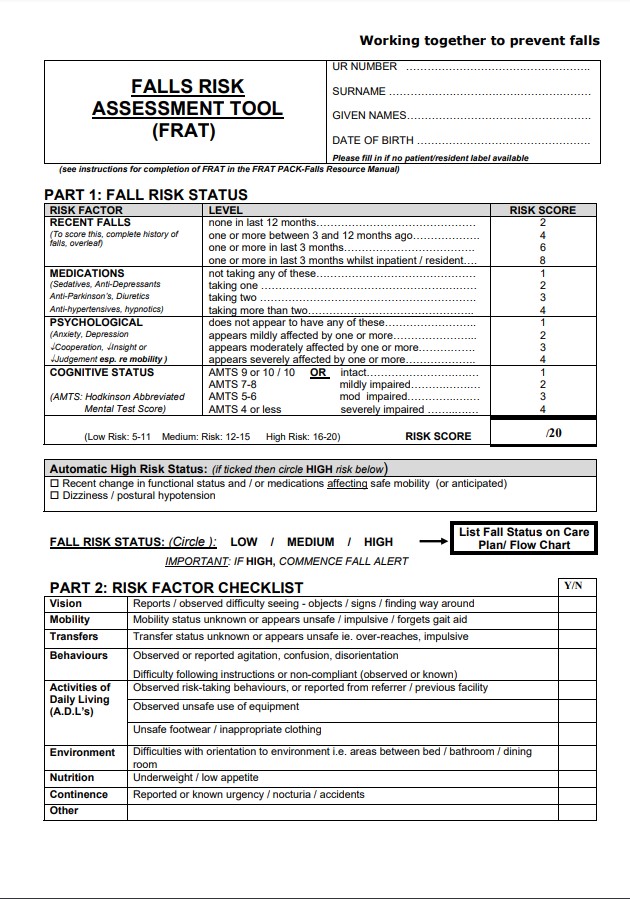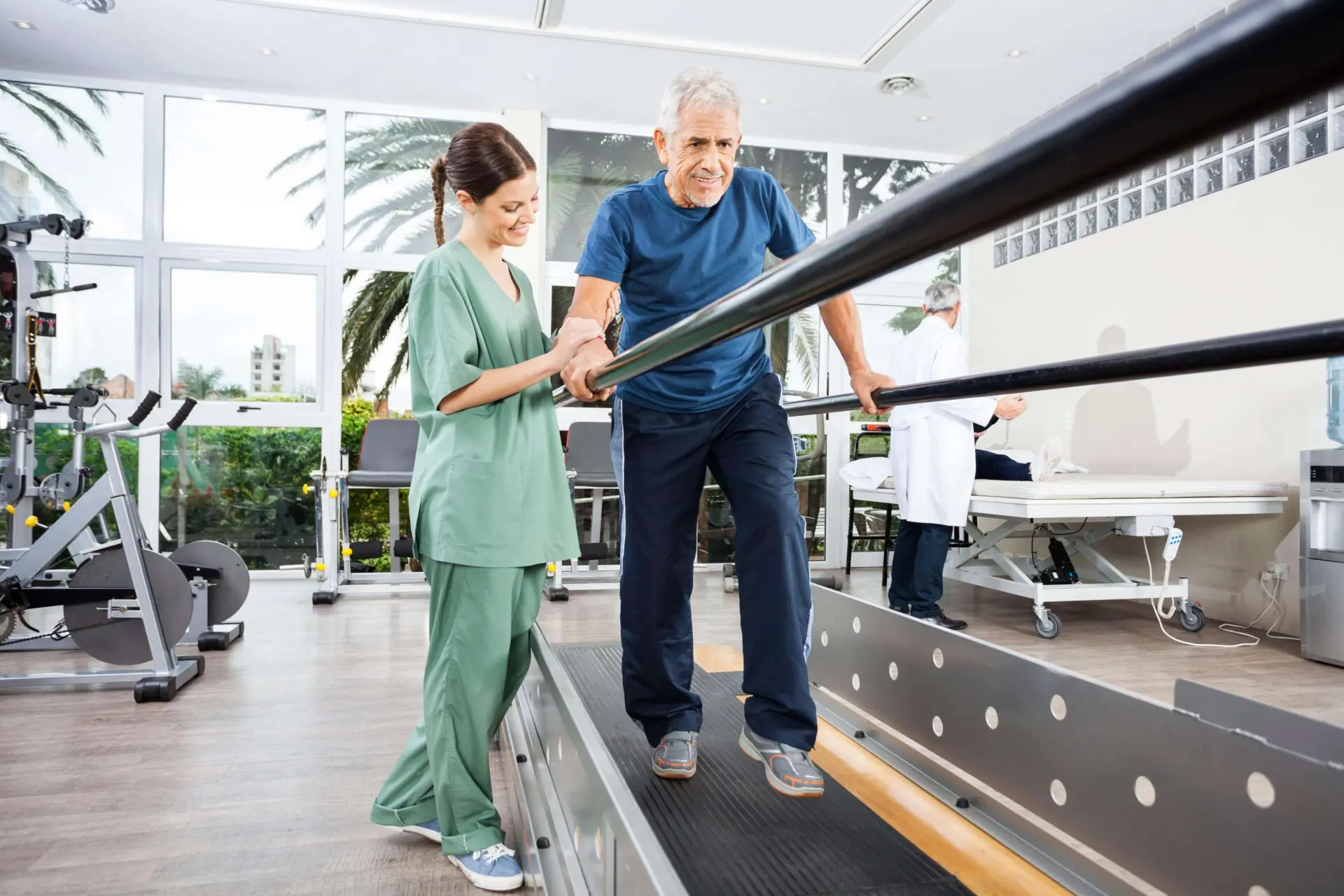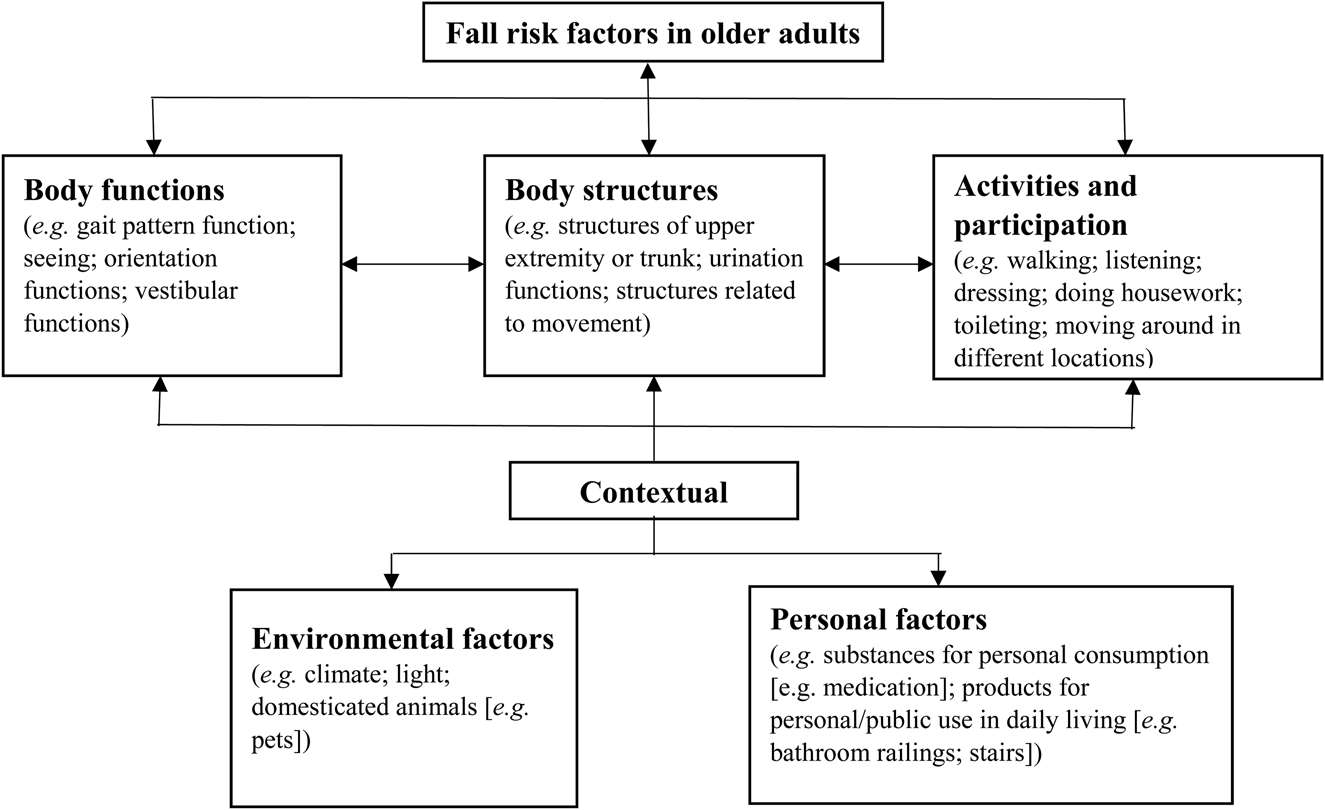Not known Facts About Dementia Fall Risk
Table of ContentsThe Basic Principles Of Dementia Fall Risk An Unbiased View of Dementia Fall RiskUnknown Facts About Dementia Fall RiskThe Basic Principles Of Dementia Fall Risk Our Dementia Fall Risk Diaries
The FRAT has 3 sections: fall risk status, danger element list, and activity strategy. A Loss Danger Status consists of information concerning background of recent drops, medications, mental and cognitive status of the person - Dementia Fall Risk.If the patient scores on a danger factor, the matching number of factors are counted to the patient's fall threat score in the box to the far. If an individual's autumn danger rating amounts to 5 or greater, the individual is at high threat for drops. If the person ratings only 4 points or reduced, they are still at some threat of falling, and the registered nurse must use their finest professional assessment to manage all loss danger variables as component of an all natural treatment plan.
These typical approaches, as a whole, aid establish a secure environment that minimizes unintentional drops and defines core preventive procedures for all individuals. Signs are important for individuals at danger for falls. Medical care companies require to recognize who has the problem, for they are liable for executing activities to advertise person safety and protect against falls.
Dementia Fall Risk for Beginners
Wristbands must consist of the individual's last and first name, date of birth, and NHS number in the UK. Only red color must be used to signify special patient condition.
Items that are too much may need the patient to get to out or ambulate needlessly and can potentially be a danger or contribute to drops. Aids prevent the individual from going out of bed without any kind of help. Nurses respond to fallers' call lights quicker than they do to lights initiated by non-fallers.
Aesthetic impairment can substantially trigger falls. Hip pads, when used properly, might minimize a hip fracture when fall occurs. Maintaining the beds closer to the flooring minimizes the threat of falls and serious injury. Putting the cushion on the floor substantially reduces fall risk in some medical care setups. Reduced beds are created to decrease the distance a patient drops after relocating out of bed.
The Facts About Dementia Fall Risk Revealed
Patients that are high and with weak leg muscle mass that try to rest on the bed from a standing position are most likely to drop onto the bed due to the fact that it's as well low for them to reduce themselves securely. Likewise, if a tall patient attempts to stand up from a low bed without help, the patient is most likely to fall back down onto the bed or miss the bed and fall onto the floor.
They're made to promote prompt rescue, not to avoid drops from bed. Distinct alarms can also advise the patient not to rise alone. Making use of alarm systems can additionally be a replacement for physical restraints. In addition to bed alarms, increased supervision for high-risk people additionally may assist prevent falls.

Clients with an evasion gait increase fall chances you can try these out substantially. To lower autumn risk, footwear need to be with a little to no heel, thin soles with slip-resistant step, and support the ankle joints. Advise person to utilize nonskid socks to avoid the feet from gliding upon standing. Nonetheless, encourage people to wear suitable, well-fitting shoesnot nonskid socks for motion.
Some Ideas on Dementia Fall Risk You Should Know
In a research, homes with ample lighting record less drops (Ramulu et al., 2021). Enhancement in illumination at home may lower loss rates in older adults.

Caretakers are efficient for guaranteeing a protected, secured, and risk-free environment. Nonetheless, research studies showed very low-certainty proof that sitters reduce autumn danger in severe care medical facilities and only moderate-certainty that choices like video monitoring can decrease sitter usage without increasing loss danger, suggesting that caretakers are not as valuable as at first believed (Greely et al., 2020).
The 7-Second Trick For Dementia Fall Risk

Enhanced physical fitness reduces the risk for resource falls and restricts injury that is endured when loss takes place. Land and water-based exercise programs may be likewise valuable on balance and stride and thereby minimize the threat for drops. Water workout might contribute a favorable advantage on equilibrium and stride for females 65 years and older.
Chair Increase Exercise is a basic sit-to-stand exercise that assists strengthen the muscle mass in the upper legs and buttocks and enhances mobility and self-reliance. The objective is to do Chair Surge workouts without making use of hands as the customer ends up being stronger. See resources area for a comprehensive direction on exactly how to do Chair Increase exercise.